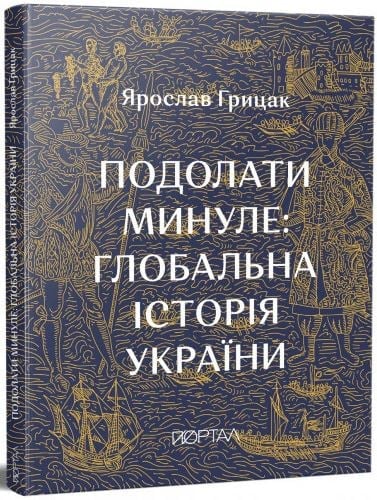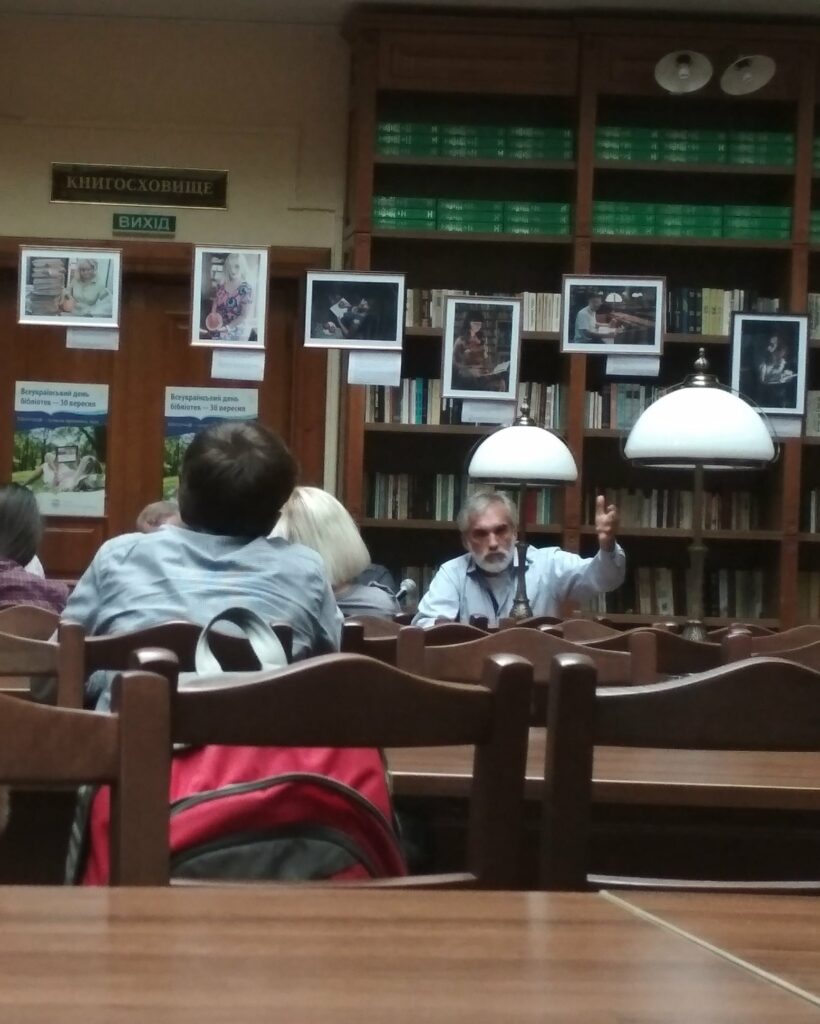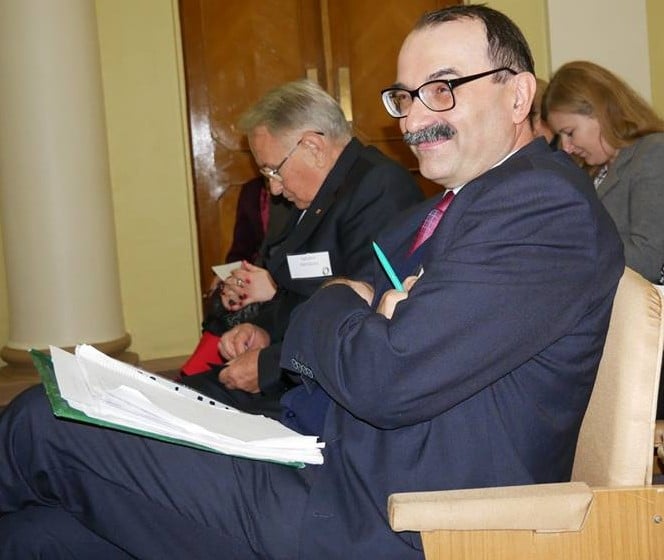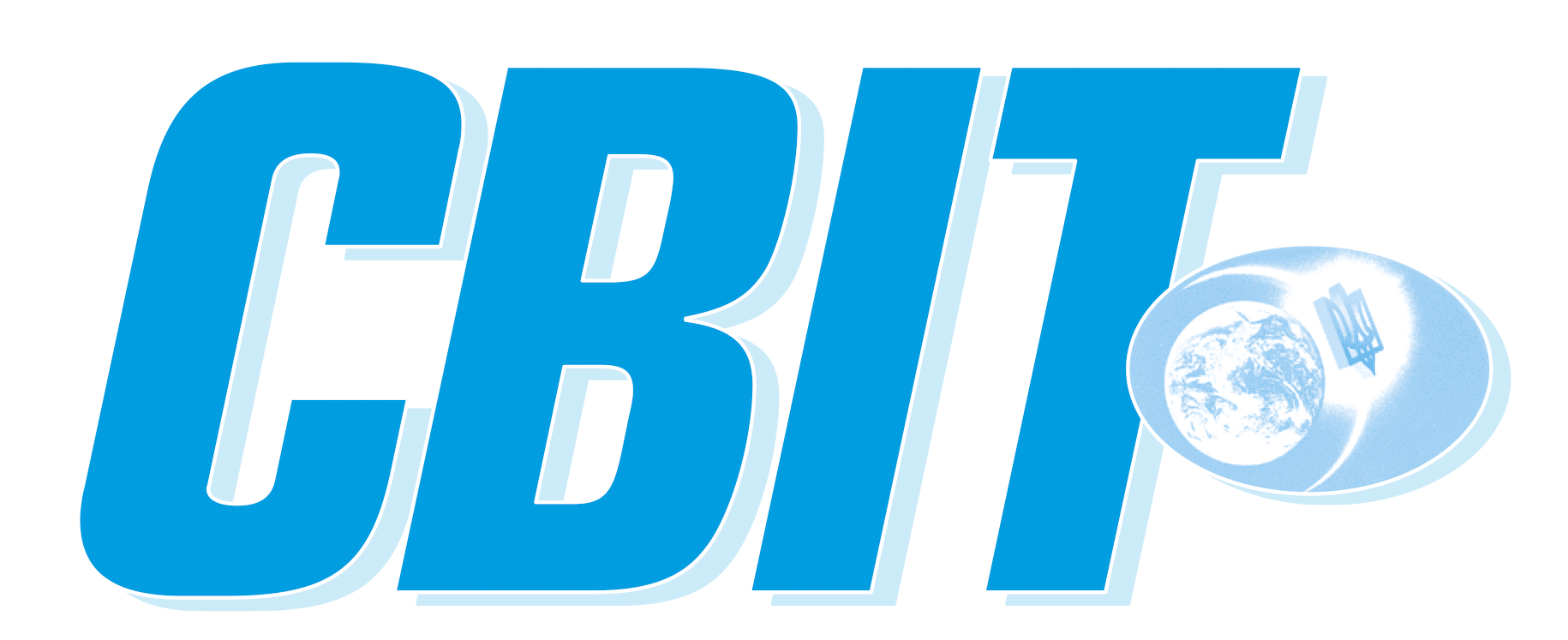Yaroslav Hrytsak. Overcoming the past: the global history of Ukraine. Kyiv: Portal, 2021. – 432 p.
Axiomatically: one of the foundations of modern Ukrainian nationalism (I use this word in the academic sense, without any political connotations) was the “History of the Rus” written in the late 18th century, which was distributed in numerous manuscript copies among starshyna (prosperous class of Ukrainian Cossacks) families of the former Hetmanate, and whose authorship is still disputed (quite possibly, these disputes will never reach a final solution).The text not only factored on the first “scientific” histories of Ukraine by Dmytro Bantysh-Kamensky (first edition in 1822) and Mykola Markevych (published in 1842-43), but also was of great importance for the development and formation of our literary romanticism (which, in turn, formed the basis for the formation of the latest Ukrainian identity). Probably, Shevchenko would have been different if he had not read the proud and freedom-loving speech (as it is now known, it was quite fictional) of the prisoner Pavlo Polubotko, addressed to the despotic emperor Peter I.
The next two influential synthetic stories in one volume appeared in the early 20th century. Mykola Arkas was the son of a Russian admiral and at the same time a talented amateur historian and artist; in his History of Ukraine-Russia, lovingly edited by Vasyl Domanytsky (first edition in 1908), he somewhat modernized the romantic schemes of the 19th century. Instead, our greatest professional historian Mykhailo Hrushevsky of that time (and probably, up to the present) in the popular “Illustrated History of Ukraine” (1913) briefly outlined the scheme, which he developed from the end of the 19th century in the multi-volume “History of Ukraine-Rus”: history of the Ukrainian people was long, it developed in parallel with the history of those states, which included Ukrainian territory at different times.
The Soviet era apparently did not contribute to the creation of such synthetic texts, and the History of the USSR, which was published at the time, provided only a “projection” of all-Russian/all-Soviet historical events (appropriately censored and prepared) on the local landscape. It was almost impossible for a person with an elementary inclination to analyze, to read them. It is no coincidence that after the proclamation of Ukrainian independence the translation of the book “Ukraine: a History” by Toronto professor Orest Subtelny (published in 1988 in English) became the basic text for our universities (and simply the text that occupied the niche of “Illustrated History of Ukraine” for the educated public).
And only in the second half of the 1990s “Genesa” published new purely national “Essays on the History of Ukraine” in two books, the first of which was dedicated to the events of the late 18th century and was written by professor of Kyiv Mohyla Academy, a well-known researcher of early modern times Natalia Yakovenko, and the second book dedicated to the formation of the modern Ukrainian nation in the 19th-20th centuries was written by a then young professor at the University of Lviv Yaroslav Hrytsak.

In 2015, another influential English-language text appeared: “The Gates of Europe: History of Ukraine” by Harvard professor Serhiy Plohiy, which was published a year later in Ukrainian (“Gate of Europe. History of Ukraine from the Scythian Wars to Independence”); two years later the author was awarded our highest state award, the Taras Shevchenko National Prize of Ukraine.
Now we have another synthetic book: “Overcoming the past: the global history of Ukraine” by Yaroslav Hrytsak. The author describes his ambitious task as follows: “The history of Ukraine that you hold in your hands… tries to find out whether (and how) it is possible to overcome the past. It was written primarily for young people who were born after the collapse of communism, reached maturity in the last ten to fifteen years, and will take over power in Ukraine in the next ten to fifteen years”.
At once I want to warn: the author of this review does not belong to the outlined happy category of readers by age. But he was also interested in following the opinion of one of the leading Ukrainian historians and together with him trying to understand how fatally our unfavorable historical heritage presses us, which we use to blame for all our present and future troubles.
Yaroslav Hrytsak’s book cannot be considered a basic textbook intended for the study of Ukrainian history, as all the above-mentioned books, from Mykola Arkas to Serhiy Plohiy, performed this function. It does not mention (or only mentions in passing) such significant events for our narrative as the burning of Iskorosten by Princess Olga, the Congress of Princes in Lyubech, the summit of European monarchs in Lutsk, the Constitution by Pylyp Orlyk and a speech (mythical but important for future generations) of Pavlo Polubotok, the activities of Ukrainian deputies in the first and second Dumas, the convocation of the Ukrainian Autocephalous Orthodox Church in 1921, the heroic defense of Donetsk airport, Tomos in 2018 (the list can be continued).
So, this is not really a book about the historical events in Ukraine “from the Scythians to Volodymyr Zelensky”, but an attempt to understand why the general trends turned out to be such and what this may mean for our future. At the same time, the author honestly warns: he is an expert in the modern history of the 19th and 20th centuries, and his main conclusions and generalizations will relate to this period.

Despite this caveat, the description of the events of “gray antiquity” in the book is also invariably interesting. First of all, because it is presented on a global historical background: the emergence of the first centers of agriculture on the globe, the spread of ancient polis-cities and the “Roman world”, the emergence of Christianity, Norman expansion, etc. Referring to the history of early Russia, the author basically adheres to the well-known concept of “state-fort” by Omelyan Pritsak. According to this concept, the legendary original Rus of the Ruriks, Olegs, and Olgas was certainly a Varangian formation, far from any modern notions of a mature state, and its “Slavicization” and regulation correspond to the times of Volodymyr and Yaroslav.
Instead, the central point of Ukrainian early modern history according to Y. Hrytsak is, certainly, the Cossack period, which later became the base point for the formation of a new Ukrainian identity. In this aspect, the historian does not deviate far from the concepts of his predecessors, starting with Arkas and Hrushevsky. He only adds: “The Cossack starshyna saw itself as a Little Russian version of the Polish nobility (shlyakhta), and its state – as a copy of the Rzeczpospolita”. In fact, the Hetmanate of the 18th century (which lived in the memory of both “Ukrainophiles” of the 19th century, and incompetent state builders of the early 20th century, and their much more talented contemporary artists) borrowed all the best which differed it from the despotic Moscow-Russia from the then unique European democratic experience of the Rzeczpospolita with its developed legal consciousness and developed and established legal procedures (despite the widespread opinion that “Poland is in trouble”).
But the historian is not entirely accurate: the Cossack starchyna did not deem itself a Polish shlyakhta (historians of the Kostomarov and Antonovych generation associated this term with the implacable enemies of Ukraine and Orthodoxy; and later this term was widely used by Soviet historiography, but with an emphasis on social exploitation). This starshyna not only deem itself, but was actually the Rus nobility (like Khmelnytsky, Vyhovsky, Mazepa, Orlyk), part of the “noble people” of the Rzeczpospolita. It was this nobility that won back the uniquely extensive Lublin Privileges of 1569, which laid the foundation for the separation of Ruthenians as the “third people” of the Rzeczpospolita (along with Poles and Lithuanians) – a scenario that was not fully realized due to Cossack uprisings, inflexibility of Corona elites, and later Moscow’s harsh intervention. (All this is described in detail in the recently published book by Natalia Starchenko “Ukrainian Worlds of the Rzeczpospolita “).
A late representative of this Rus nobility is the colorful coachman Tetervakovsky from “Natalka Poltavka”, who in a seemingly secondary, but in fact important for the author scene of action III unexpectedly defends Ukrainian antiquity from the inventions of “Muscovite” Prince Shakhovsky: “a great lie has been exposed to the public. For this, the Little Russian Chronicle has the right to summon the author with a lawsuit”. And it was the activity of the descendants of this nobility in defense of their rights to the Russian nobility in the early 19th century that resulted not only in the collection of ancient documents (which made possible the creation of texts by Bantysh-Kamensky and Markevych), but also to various autonomous and, later, state concepts.
The most interesting part of Hrytsak’s book is, certainly, the story of how the former Ruthenians of the Habsburg Empire and the “Hahly” with the “Little Russians” of the Romanov Empire decided to “imagine” themselves Ukrainians (we use Benedict Anderson’s statement, following the author). The historian is an expert in the field of the modern period, so he feels at ease, decorating the story with extremely colorful details and insights. No less interesting (although sometimes spooky, sometimes it is physically painful to read them) are the pages about the traumatic experience of Ukrainians in the 20th century. One cannot disagree with the historian: at the time of the proclamation of independence in 1991, it was almost impossible to find a family in Ukraine whose property would pass from grandparents to parents, from parents to children for at least three generations. Historical cataclysms led to the fact that each generation had to start from nothing. So, accustomed to the fact that the state steals from them, people came to the firm belief that stealing is not only acceptable, but also necessary for survival. That is why it is so difficult for Western traditions of respect for property to take root in Ukraine. That is why corruption has become incredibly widespread (which at the same time provides fertile ground for various “populist fighters” whose consequences are even more devastating).
However, not only things acquired through hard work perished en masse. The people to whom these things belonged also perished. The pages of the book describing the violence of all against all are among the most impressive. Violence against the rich and against the poor, violence against political opponents and casual victims, violence against Ukrainians and retaliatory violence against Jews or Poles…
A priest burned alive on Makhno’s orders in a locomotive furnace, Jews killed in Lviv first by Poles and then by Ukrainians, and then totally eliminated by the Germans, Ukrainian peasants who went mad with hunger and ate their own children, a “Ukrainian nationalist” from whom a Soviet communist (a real interlocutor of Oleksandr Dovzhenko, who seems to have worked for many years in the “leadership position”) cut pieces of meat, hanging the man upside down and burning over low heat – all these awful pictures will haunt even the reader with strong nerves.
But Y. Hrytsak not only describes all those terrible things, but also soberly analyzes them. Probably, his concept is useful, which allows us to understand the nature of the manipulations resorted to by historians who are hostile to Ukrainians, denying the nature of the Holodomor as genocide. Indeed, there was objectively an “all-Union” famine of 1932, caused by both natural factors and the excesses of collectivization; however, the terrible artificial famine of 1933 was Stalin’s “invention” for Ukraine. The historian emphasizes that the exceptional level of violence in Ukraine was the result of geopolitical instability, fierce competition between different political regimes, and frequent changes of government. Under such conditions, the state at one time lost its monopoly on violence that spilled over into the streets, and murder became an almost “intimate” thing (victims and executioners often knew each other and sometimes even made friends before).
The example of Ukraine in 1919 seems to have shown that any worst state is better than its complete absence. But later events have shown that this is not always the case. After all, the communist state that was established on Ukrainian soil was (at least until the early 1950s) a “killer state”. Not only did it restore its monopoly on violence, but the violence became its essence. Without mass violence, the communist system could not exist, and even after partial and inconsistent Gorbachev’s liberalization, it quickly collapsed.
Meanwhile, there was also the Second World War, which the USSR formally ended as a victorious state (with human losses far exceeding the losses of both the Axis and other victorious states in terms of pre-war population).
The story of Y. Hrytsak is not only a “history of horrors” (you can’t get away from them in our past), but also a “history of ideas”. It is useful, for example, to understand that the main ideological conflict of the 1960s took place in Soviet Ukraine between the “elders” (who adopted the provisions of the “new Pereyaslav agreement” that allowed the Ukrainians in the USSR to rise, as high as possible, social levels – at the cost of their denationalization and unconditional loyalty) – and “youngers”, who, following Ivan Dzyuba, considered this situation a violation of “Lenin’s national principles”. If we consider this conflict in terms of the “classical” national liberation struggle, it would be an obvious exaggeration and simplification.
In conclusion, the author states: “Ukraine’s past does not inspire excessive optimism about its future. Fortunately, history is not a prison. It suggests that one should not expect automatic rapid changes, but does not rule them out altogether”.
To some extent, it is unexpected that the history of the “liberal” Y. Hrytsak turned out to be a passionately written history of the Ukrainian nation (though political). For a calm academic story of everything that happened in the territory of today’s Ukraine “from Rurik”, the book contains very little information about the first Rzeczpospolita, almost no Crimean Khanate, little about Roman Empire (a little “luckier” is the Habsburgs Empire, interwar Poland and the USSR). But it contains really poetic excursions into the history of Ukrainian song and the Ukrainian language, which are written with a vivid feeling.
The historian’s conclusion about the future of the Ukrainian nation is just cautious: “it is a paradigm shift: to stop looking at the nation as an end in itself and perceive it as a platform for modernization. As we know, paradigm changes do not happen quickly, without accumulation of trials and errors. But these changes happen. And every time during their next big wave, the number of countries that succeed in successful modernization grows. The main thing is to understand the logic of such modernization. The very knowledge of Ukrainian history is clearly lacking. On the contrary, in order to overcome the past, Ukraine must go beyond national history and apply a global perspective”.
Even these attempts to provide careful answers to the basic questions (obviously, clear and comprehensive answers to them do not exist) make the new book by Y. Hrytsak definitely worth reading and discussing.
And finally – about what the book should not contain. In the preface, the author honestly admits that he is not an expert in the period until the beginning of the 19th century, and apologizes in advance for possible mistakes. However, these errors, inaccuracies and reservations (sometimes almost anecdotal) are generously scattered throughout the book.
The phrase “unlike Volodymyr the Great, Charles the Great accepted Christianity not from Constantinople but from Rome” (p. 84) should be considered at least unfortunate, because the Franks were baptized as Catholics under Clovis, three centuries before Charles the Great put the imperial crown on his head. Contrary to the Y. Hrytsak’s assertion (p. 108), Yarema Vyshnevetsky (1612 – 1651) could not be a son of Mykhailo Vyshnevetsky (1529 – 1584), nephew of the famous Baida. It was hardly necessary to pinpoint the years of life of the semi-legendary Marusya Churai (1625-1653) because there is no documentary evidence of these dates (as well as the reality of the existence of this girl-poet sung by Lina Kostenko, although, on the other hand, the song “Oh, do not go, Hrytsyu” someone had to write). Ironically, virtually, everything we know about Marusya comes from the novel “Marusya, the Little Russian Sappho” (1839) by the same Prince Shakhovsky, whose tendency to distort historical facts is so angrily criticized by Tetervakovsky in “Natalka Poltavka”.
There is no evidence that Lesia Ukrainka once translated the Communist Manifesto, as stated unequivocally on p.185. Indeed, such a legend exists, but even in Soviet times this translation was not allowed to be included in academic publications of her works (although the Ukrainian translation of “proletarian writer” Gorky’s “Old Izergil” and the Russian translation of “Weavers” by the “progressive” Hauptmann, which in fact do not belong to the writer, were printed in the collection of her works, probably to make her “more progressive and closer to the workers”).
Mykhailo Hrushevsky died not in 1936 (as stated on p. 161), but two years earlier. And the Ukrainian state, in whose capital he was buried after transporting the body from Kislovodsk, was not called the “Ukrainian Soviet Socialist Republic” (as the author claims many times), but the “Ukrainian Socialist Soviet Republic” – UkrSSR (the order of words in the title was unified with other “Soviet sisters” only at the beginning of the sinister 1937).
Finally, the Chernobyl catastrophe occurred not “almost a year before the young Gorbachev came to power in the Kremlin” (p. 358), but about a year later. Certainly, for Y. Hrytsak, who was a contemporary of Chernobyl, this is a common mistake, lapsus calami. But for young readers, for whom the book is intended, it becomes just normative information…
Normative will be the information that the Russian intellectuals “proved” the inability of the Ukrainian language to become a language of high culture, translating Hamlet’s monologue “To be, or not to be, that is the question” in a peasant way: “that’s the sticking point!”. This phrase on p. 382 also needs significant clarification: in fact, the fiction of the “sticking point” (zakovyka) was born in the circle of old “Ukrainophiles”, who considered attempts to translate the classics “into the Little Russian dialect” as premature and unnecessary, and condemned the related “language forging” (when a number of “forged” nouns were put into circulation to denote abstract concepts missing in the vernacular, such as “dream”, “indifference”, etc.). “Zakovyka” was a reaction to the appearance in 1882 of the translation of “Hamlet” by Mykhailo Starytsky (where the beginning of the monologue was translated as “To live or not to live – the question is posed point-blank!”) and was quickly picked up by Black-Hundreders of all stripes.
On p.382, a paragraph above, we read: for a long time the opera was exclusively in Italian. But Mozart and his “Magic Flute” prove that German can also be the language of opera. In fact, you don’t have to be too deep to know: German opera has been written since the early 17th century, and a century later, before Mozart, such prominent composers as Handel and Gluck did it. The same Handel also wrote operas on English librettos (already having Purcell as a predecessor). And Lully and Rameau successfully wrote popular operas in French. Thus, the statement about the exclusive Italian-language opera before Mozart is a clear exaggeration.
But the mention of the Ukrainization in 1926 of the opera – then the “most prestigious” artistic genre – should be added in the story of the achievements of Ukrainization. It provoked much greater public debate than the Ukrainianization of drama theater mentioned on p.258 (Ukrainian troupes existed in the Romanov Empire from the early 1880s and in the fiercest years of reaction, so it would be more accurate to talk about modernization of the repertoire, direction and scenography), or movies. As Yuri Shevelyov once noted, a stream of the most brutal anti-Ukrainian anecdotes was directed at the Ukrainianized opera (although the prominent Russian tenor Leonid Sobinov specially learned Ukrainian to sing Lensky and Lohengrin parts in Kharkiv, Kyiv and Odessa, and was very pleased with the sound of these crowning parts).
Such mistakes and omissions would be less if the book had an academic editor (or at least an ordinary professional editor who would have some knowledge of history and culture). Unfortunately, it seems that there was no such editor…
The publication, obviously, was planned as a “luxury” one, on thick paper and with good printing. However, there are also many complaints about its technical quality. It is impossible to fully use almost a half of the definitely informative historical maps because they are not edited. For example, on p.81 most of the dates of the annexation of lands to Moscow are wrong (the Moscow principality in 1462 is marked as the lands annexed by Ivan III, although he only began to rule that year; the same inaccuracies are scattered in each line of the “legend” and so on). In the “legend” to the map on p.118, 31 potential places of origin of the Cossacks are deciphered, although they are 39 on the map – for some reason the Caucasus, Turkey and the Balkans “disappeared”. The list can be continued.
Finally, on most maps it is very difficult to trace the borders of states, front lines or demographic and economic characteristics of cities and regions, marked by different shades of green (other colors the book does not know), the difference between which is very conditional. But the professional level of editing is a well-known “scourge” of Ukrainian scientific and popular science books, and the conversation about it is far beyond the scope of this paper.

I would like very much these and other shortcomings to be eliminated in the second edition of the book (the need for which, certainly, will appear soon).
And finally. The book is dedicated to the memory of Oleksandr Hrytsenko (1957 – 2020), Ukrainian writer and culturologist. A cybernetic by education, he was one of the brightest participants in the literary debates of the late 1980s, and in the new millennium he became a deep researcher of the politics of memory in independent Ukraine and the mechanisms of modern Ukrainian mass culture that directly influence the formation of national identity. The scientist left us too early, but his works continue to live and encourage others to further develop their ideas, among which one of the leading ideas was that of modernization. Hence, the dedication becomes deeply motivated.
Maksym STRIHA, a full member of the Academy of Sciences of the Higher School of Ukraine
Svit newspaper, № 3 – 4, 2022
